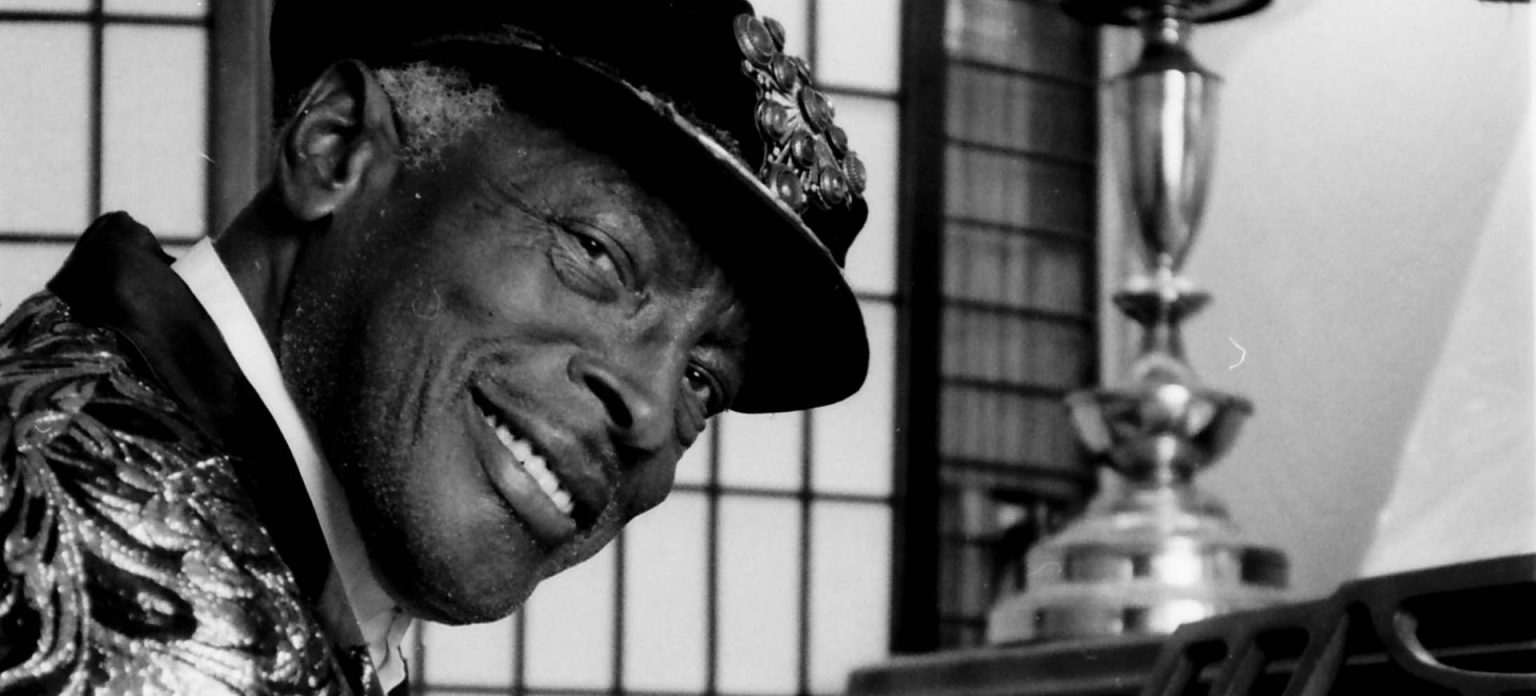It was 1945 and the end of World War II. Black GIs were returning home by the thousands, looking for a new sound in R&B music. Charles Brown, then a member of Johnny Moore’s Three Blazers, provided that sound with his “Drifting Blues,” a sophisticated, jazzy, uptown blues tune yet one that is still roots-based.
Brown’s voice was a whisper compared to the shouting blues vocals contemporaries such as Roy Brown, Wynonie Harris, and Amos Milburn. Drifting Blues seduced a generation and was the Cash Box Best R&B Record of 1946. It also stayed on the Billboard R&B Chart for six months. It also put Brown at the forefront of a musical evolution that would change American music entertainment.
Tony Russell “Charles” Brown was born on September 13, 1922 in Texas City, TX and was orphaned at an early age. This is where you might expect to hear how he was raised in a one-room cotton shack but nothing could be further from the truth. He was raised by loving grandparents who fed his love of music by providing him with classical music training on the piano. He was an honors high school student, then a science teacher and junior chemist – all while playing small clubs around Galveston and in his uncle’s church. He migrated to Los Angeles in 1943 were he began to sing as well.
Through the ‘40s and ‘50s Brown had several hits both with the Three Blazers and on his own. Those hits included “New Orleans Blues,” “More Than You Know,” “Get Yourself Another Fool,” “Trouble Blues,” “Homesick Blues,” “My Baby’s Gone,” and “Black Night.” He had not one but two seasonal hits in Merry Christmas Baby and Please Come Home For Christmas. His popularity began to wane in the mid-50s with the advent of rock and roll. Audiences were finding the raucous style Little Richard, Fats Domino, and Big Joe Turner to be more appealing.
Charles Brown fell off the musical radar for a while but his influence remained. Ray Charles, Sam Cooke, Prince, and even Aretha Franklin were stylistically indebted to him.
Bonnie Raitt had fallen in love with such blues luminaries as Son House, Muddy Waters, and Howlin’ Wolf as a teenager but was taken in by the smoothness and longing in Brown’s vocals. She described Brown’s voice as being like brandy and molasses dripping down (a) sultry, laid-back groove. “There was something so late-night and intimate about it,” she said, “full of longing and insinuation, like he was leaning over my shoulder singing just for me.” No surprise then he was requested to open for Raitt on a major rock tour by Bonnie herself.
Charles Brown has been inducted into both the Blues Hall Of Fame and the Rock and Roll Hall Of Fame. He was a recipient of a 1997 National Heritage Fellowship awarded by the National Endowment for the Arts, the highest honor in the folk and traditional arts in the United States. Between 1987 and 2005, he was nominated for seventeen Blues Music Awards in multiple categories, with a win in the Blues Instrumentalist: Piano/Keyboard category in 1991, and wins in the Male Blues Vocalist category in 1993 and 1995.
Happy Birthday, Charles Brown. And thanks for over a half century of a blues style tinged with sophistication, longing, smoothness, aching, and a touch of jazz.


